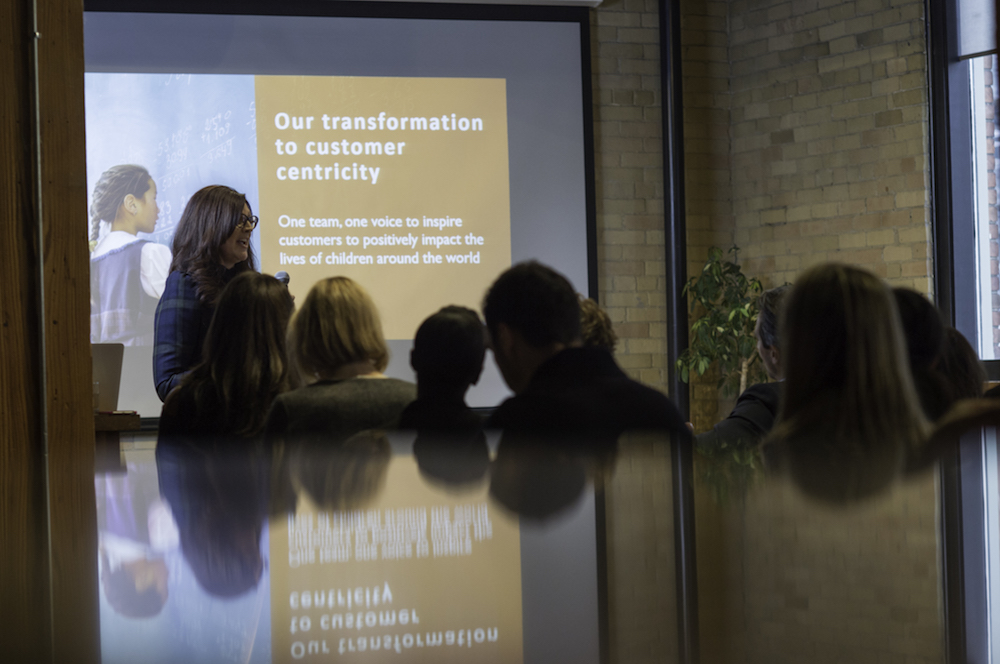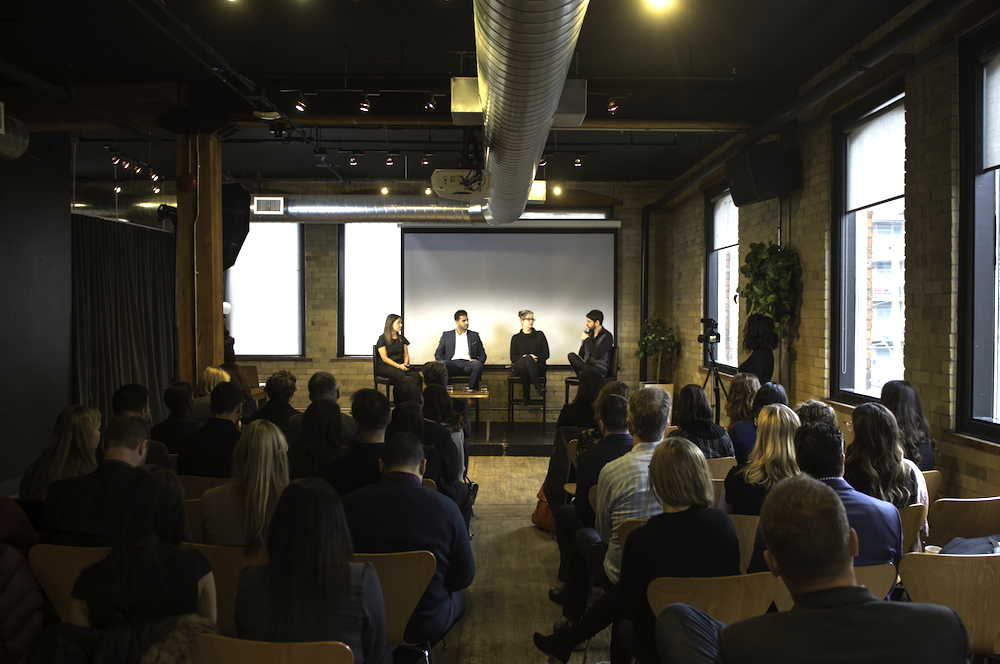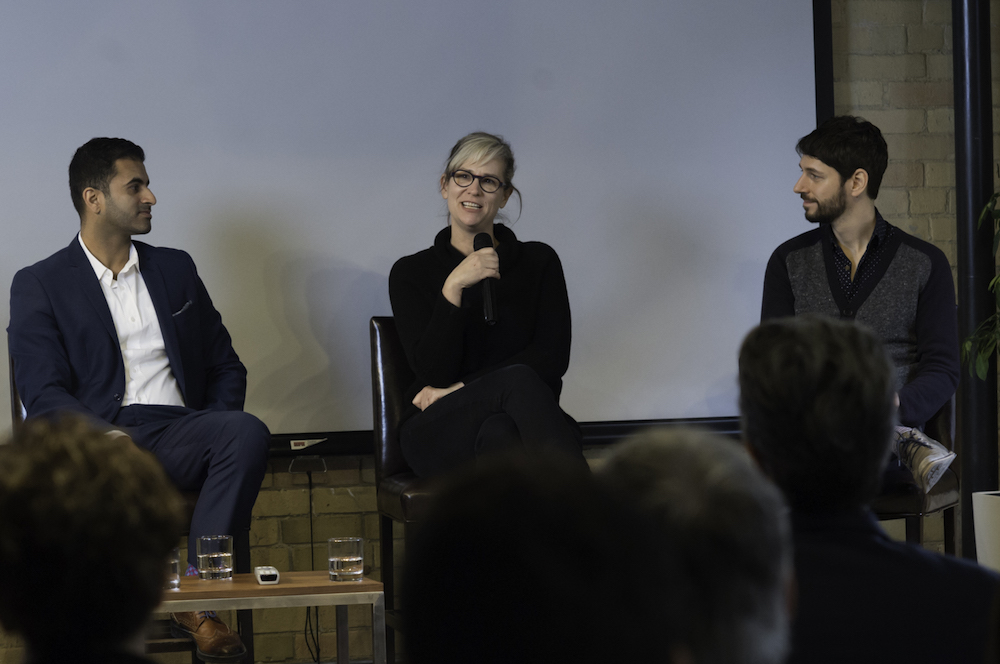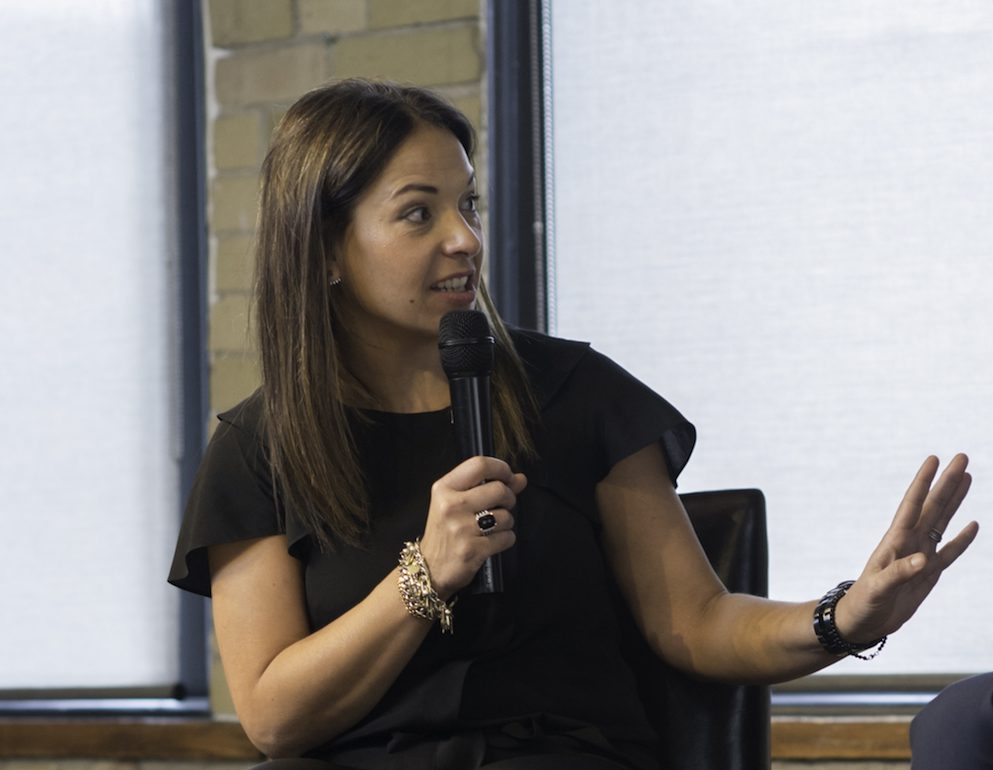Transcript
Gina Baillie:
We have other board approved mandates that we’re working on, but the top priority right now is digital. We need to have people who can impact and influence not through title. We need people who can build relationships, and build trusting relationships because we are getting into the weeds with this type of work so it’s a much more efficient process to come together with the right people to do your customer’s inter-planning.
Leigh Himel:
So interconnecting things, collaboration, and having the consumer at the center has actually been my entire career, and I have now had an
agency where we actually originally started calling it the agency of the consumer. Mostly it was because strategy insights is at the core of everything we do.
Cheri Mara :
My role is to understand the customer, and help ensure we can drive business requirements and deliver against that.
Amar Kulkarni:
My mandate is essentially to help a 60-year-old company that just celebrated their 60th anniversary in Canada, and I think they are going to celebrate their 100th in the U.S. in a few years. And really look differently and bring insights, data, digital, and a new thinking of collaboration to an organization that, I would say, that experienced. Everything from the vision, to the mission, to the values, to the product design, to the brand, that even the digital presence is all-around the customer. So I think it’s not just from a design perspective that the customer is important, it’s from the value perspective from the company.
Leigh Himel:
To me it’s business, brand, and customer, actually. And at different points in time those lenses have to move in or out.
Cheri Mara :
Customer is not everything, we absolutely are here to make money, but you’re licensed to make money, it’s because you serve the customer.
Can you talk about that need to create the seamless experience, and you know in my experience across three organizations in retail now, you know most organizations have set these up as very separate entities. You have an e-commerce and you have a brick and mortar. And the reality is customers are asking for that to be seamless. They don’t shop your store or your website they shop your brand, and today what digital has done is given them more access to that brand.
Amar Kulkarni:
I think personas are critical, I mean we talked about customer journeys, but I think personas and customer journeys go hand in hand.
Cheri Mara :
Data excellence is actually not about trying to aggregate already existing data, but to create a new model for data and new governments, and start to collect that
from this point forward. So that we have that capability into the future.
Leigh Himel:
While the data conversation can become really intimidating because you are doing sales systems with old legacy systems and the price tag to transform all of that… I think sometimes you just have to think differently about your data strategy and start thinking about how can we get the data we’re going to need in the future because I think there’s a
great Marshall McLuhan quote that says you can’t go forward looking in the past. I think sometimes you can actually get confused by past information, and a lot of the A.I. systems they work really well with better data, but they can also learn overtime. So how are you going to move forward and not get stuck trying to fix a problem that is a very large one to fix.
On November 23, Say Yeah partnered with Boost Agents to continue the Disrupting with Digital event series, this time focusing on the benefits cross-organization collaboration has on driving customer experience and service excellence, and highlighting effective omnichannel strategies. Our accomplished speakers shared their expertise on leading transformation initiatives across a variety of organizations throughout their careers.
Keynote speaker, Gina Baillie, Director of Customer Journey Management at World Vision, shared a case study on the organization, highlighting steps it took to break down organizational silos that were causing internal friction and customer engagement issues. Gina highlighted the benefit of the whole team sharing the same goals and maintaining a mutual cultural mindset centered around the customer.

“We need to hire people who can say ‘we’, not, ‘I think it should be this way.’ We need people who can impact and influence not through title. We need people who can build relationships and build trust in relationships.”
~ Gina Baillie, World Vision
Finding the right footing between stakeholders from across World Vision was accomplished by a series of cross-organization collaboration exercises. The most impactful effort was bringing a cross-functional group of internal division leaders together to map out the digital ecosystem at World Vision and evaluate together how this served and impacted customers. The resulting digital ecosystem journey map quickly highlighted ways the cross-functional groups could better work together to improve customer engagement and more effectively prioritize work efforts.
“Customers have functional and emotional needs; the customer journey addresses that,” said Baillie. The result for World Vision has been cross-organization alignment to prioritize digital channel work that everyone agrees will have a direct impact on customers.

In an age of disruption that demands organizational transformation, it’s important to grow your knowledge and insights by engaging with a variety of industries and expertise. Moderated by the CEO of Say Yeah, Lee Dale, was a diverse panel who shared their wealth of omnichannel experience, and the relating considerations that drive omnichannel success.
Panelists included Cheri Mara from Indigo, Amar Kulkarni from Scholastic, and Leigh Himel from Gravity Partners.
A holistic view
The panelists agreed that the goal of omnichannel is not to check channel boxes, but to put your focus on the holistic experience and understand how to support customers across their entire journey.
Although customers are the focal point when looking at a holistic channel strategy and the variety of interactions and paths a customer may take across a series of channels, organizations would be be naive to focus on the customer alone.

“I think that what we’re starting to see is multiple lenses, and to me it’s business, brand, and customer, and at different points in time those lenses have to move in or out,” said Leigh Himel from Gravity Partners.
Channel silos can be particularly confounding to customers, but they can also present organizational roadblocks. Cheri Mara described her time at Wal-Mart, bridging online and offline purchasing teams to uncover new economies of scale, ordering process efficiencies, and supplier contract negotiations.
Affinity over access
Discussion on the panel led to the idea that coming up with the right solution for your customer should not solely depend on offering a product or service. Organizations need to emphasize why their solutions are the best options as they market.
In a recent article, Seth Godin said: “The buying race is over. Amazon won. The shopping race, though, the struggle to create experiences that are worth paying for, that’s just beginning.”
The panel echoed this sentiment, noting that a holistic omnichannel experience driven by purpose is a key way to differentiate in a buyer’s market.
With a nod to World Vision’s goal of eradicating child poverty, Cheri offered, “It’s not about adopting a child (the product), it’s about eradicating poverty, and when you dial it back to that bigger why and really understand the customer, I think that’s where you can create something very unique and very special.”

“People don’t care about what you’re doing or how you do it—it’s about why you’re doing it.”
~ Cheri Mara
Framing product and experience
The panel explored how personas and data can help frame content, priorities, purchasing, and product decisions, but panelists cautioned it’s important to not be too insular or numbers-driven in your planning.
Execution matters
While a discussion on data excellence, AI, and personalization pointed to future opportunities to provide even more effective service and products, the panel’s collective experience pointed to a significant challenge in getting there: too often a lack of data maturity and customer intelligence are roadblocks. And acting on old models or shoehorning new technologies into legacy systems can cause more harm than good.
The suggested approach here was to focus on today and what can be accomplished going forward with best practices, rather than looking back.
What you can learn today from customer and staff engagement can be far richer than what historical data tells us.
Get out there, talk to people in your office, at other locations, connect with customers in-store or on the streets. And connect with your peers and professionals from other industries to uncover new insights and processes you can apply to your work.
There’s no better way to get started than joining your peers in the Disrupting with Digital LinkedIn group to continue the discussion on cross-organization collaboration and omnichannel, and to join us at the next Disrupting with Digital event.